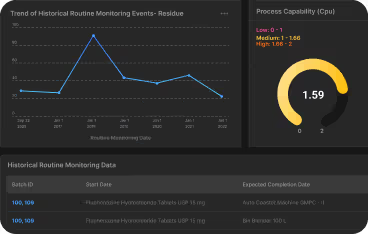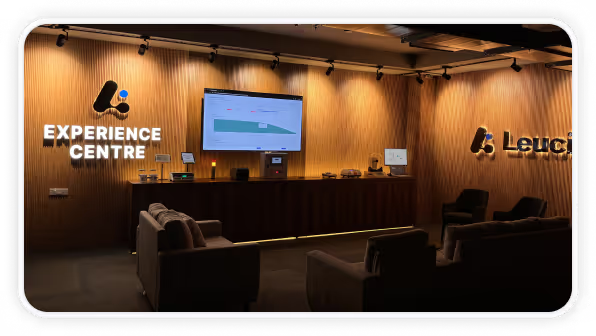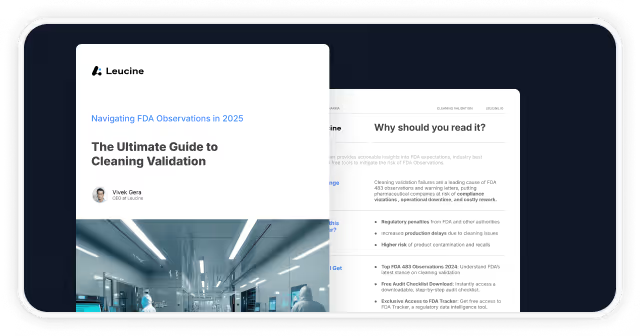SOP for Cleaning Validation: Steps for Effective Compliance
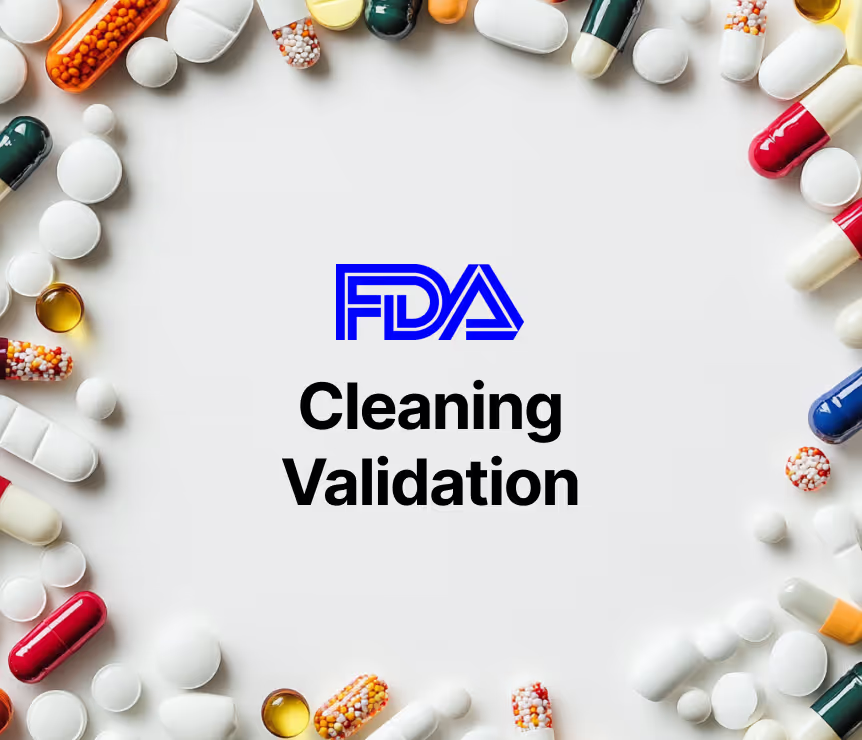
In pharmaceutical manufacturing, cleaning validation is more than just a regulatory requirement—it’s a safeguard for product quality, patient safety, and operational integrity. At the heart of a successful cleaning validation protocol lies a well-defined SOP.
Why SOPs Matter in Cleaning Validation
A validated cleaning procedure relies on clearly documented, repeatable steps. SOPs, along with a comprehensive cleaning validation master plan, bring structure and consistency to what can otherwise be a highly variable process. They ensure that every stakeholder—QA, QC, Production, and Engineering—executes the cleaning validation process with precision.

They’re especially important when multiple products are manufactured on shared equipment. A well-written SOP minimizes the risk of cross-contamination by defining how to handle cleaning agents, equipment surfaces, and sampling using methods like the swab method.
What Regulators Expect
Agencies like the FDA, EMA, and WHO expect SOPs for equipment cleaning validation to be:
- Scientifically sound and risk-based
- Supported with documented evidence of consistency and control
- Clearly written and aligned with current validation protocols
- Regularly reviewed and easily accessible during inspections
Explore how SOPs fit into Leucine’s Cleaning Validation Sub-System—and fast-track execution with CLEEN.
What is a Procedure for Cleaning Validation?
It's a controlled document that outlines how to verify that equipment cleaning is effective and compliant with GMP standards. It serves as a critical component of the overall cleaning validation protocol.

Cleaning Procedures vs. Cleaning Validation SOPs
Routine cleaning procedures guide operators on how to clean. The validation SOP procedure, however, defines how to prove that the process removes residues of products and cleaning agents to acceptable levels—often determined by the normal therapeutic dose or PDE. The results and findings are then documented in a detailed cleaning validation report.
Stakeholders Involved
- Quality Control (QC): handles analytical testing and method validation
- Quality Assurance (QA): ensures protocol alignment and compliance
- Production: executes the cleaning and supports equipment cleaning validation
- Engineering: maintains equipment readiness and supports cleaning system design
Need help aligning teams on SOP execution? CLEEN – Cleaning Validation Software makes collaboration seamless and audit trails foolproof.
When is SOP Required?
A Cleaning Validation SOP is not static—it should evolve with the processes, equipment, and products it supports. It forms a part of the overall cleaning validation lifecycle. Several situations demand the initiation or revision of a cleaning validation SOP. Understanding when to implement or update an SOP ensures continued compliance and robust cleaning performance.
Key triggers for a Cleaning Validation SOP include:
- New Product Introduction: When a new product is manufactured on existing equipment, it can introduce new residue profiles and cleaning challenges. A revised SOP ensures that cleaning methods remain effective and safe.
- Change in Equipment or Cleaning Process: Any modification to equipment or alteration in the cleaning procedure, including a switch in cleaning agents or materials, must be assessed for its impact on validation. The SOP should be updated to reflect these changes.
- Periodic Review or Revalidation: Regulatory guidance often requires periodic reassessment of cleaning processes to ensure their continued validity. An SOP should include timelines or risk-based criteria for scheduled revalidation.
- Post-maintenance or Equipment Modifications: Repairs or upgrades to equipment may alter surfaces or introduce contamination risks. Post-maintenance cleaning validation ensures the system is returned to a validated state, guided by a revised SOP.
Keep your SOPs dynamic and responsive. Use CLEEN to automate change management and revalidation triggers.

Key Components of a Cleaning Validation SOP
A robust SOP should include:
- Objective and Scope: Clarifies what the SOP covers—equipment, processes, product types.
- Responsibilities: Lists roles of QA, QC, Production, and Engineering throughout the cleaning validation process.
- Equipment and Product List: Identifies all equipment and relevant product families subject to validation.
- Cleaning Procedure Reference: Links to routine cleaning SOPs that the validation is built on.
- Acceptance Criteria: Sets residue limits (chemical, microbial, detergent), based on toxicological data or normal therapeutic dose.
- Sampling Plan: Details sampling method (e.g., swab method), locations, number of samples, and rationale.
- Analytical Methods: Describes validated analytical methods (e.g., TOC, HPLC) to assess cleaning effectiveness.
- Worst-case Determination: Explains how worst-case products, surfaces, or conditions are selected.
- Validation Protocol and Execution: Outlines number of runs, pass/fail criteria, and requirements for a successful validation.
- Deviation Handling: Provides steps to investigate, document, and resolve any deviations.
- Revalidation Criteria: Defines when revalidation is triggered (e.g., equipment changes, process updates).
- Documentation and Record keeping: Specifies how and where documented evidence is stored and retained.
- Cleaning Validation Matrix: A table that outlines the relationships between different products, equipment, and cleaning procedures.
Common Pitfalls
- Undefined or unjustified acceptance criteria
- Incomplete sampling plans and missed equipment surfaces
- Outdated or non-specific validation protocols
- Failure to align with updated analytical methods or regulatory guidance
- Lack of a cohesive cleaning validation procedure strategy that aligns with overall validation goals
Best Practices for Effective SOPs
Creating and maintaining an effective SOP goes beyond documentation—it requires foresight, scientific understanding, and collaboration. Incorporating best practices ensures that your SOP stands up to real-world application and regulatory scrutiny.
Some foundational best practices include:
- Use a Risk-Based Approach: Focus efforts on high-risk areas, such as shared equipment or complex cleaning agents. Tailor sampling and testing frequency accordingly.
- Ensure Clarity and Specificity: SOPs should be easy to follow. Use clear language, avoid ambiguity, and define responsibilities precisely. This ensures consistency across shifts and teams.
- Promote Cross-Functional Collaboration: Involve QA, QC, Engineering, and Production from the drafting stage. Each function contributes vital insights that improve the quality and usability of the SOP.
- Commit to Regular Reviews: Set review intervals and enforce version control to ensure the SOP evolves alongside your equipment and processes.
- Develop a Comprehensive Cleaning Validation Plan: Outline all necessary steps, responsibilities, and timelines to ensure thorough and effective cleaning validation.
See how teams apply these best practices with CLEEN to improve efficiency and audit performance.
Audit Readiness and Regulatory Expectations
Audits are one of the most critical stress tests for any SOP procedure. Inspectors evaluate whether the SOP reflects current practices and meets regulatory expectations. Understanding what auditors focus on can help teams prepare proactively.
Key Audit Focus Areas:
- Traceability and Execution: Auditors look for clear links between the SOP, validation runs, and records. Every activity should map back to a documented step.
- Acceptance Criteria and Rationale: Limits for residues and microbial levels should be scientifically justified, often based on the normal therapeutic dose or cleaning agent risk profile.
- Analytical Method Validation: Ensure your methods (e.g., TOC, HPLC) are validated for their intended use and sensitivity.
- Consistency with Cleaning Practices: If actual practices diverge from what's written, it can trigger observations.
Common 483 Observations:
- SOP not aligned with current validation strategy
- Inadequate or missing documented evidence of cleaning runs
- Deviations not properly captured or closed
- Improper or inconsistent use of the swab method
Be audit-ready at all times. Let CLEEN manage your SOP versioning, execution logs, and validation data.
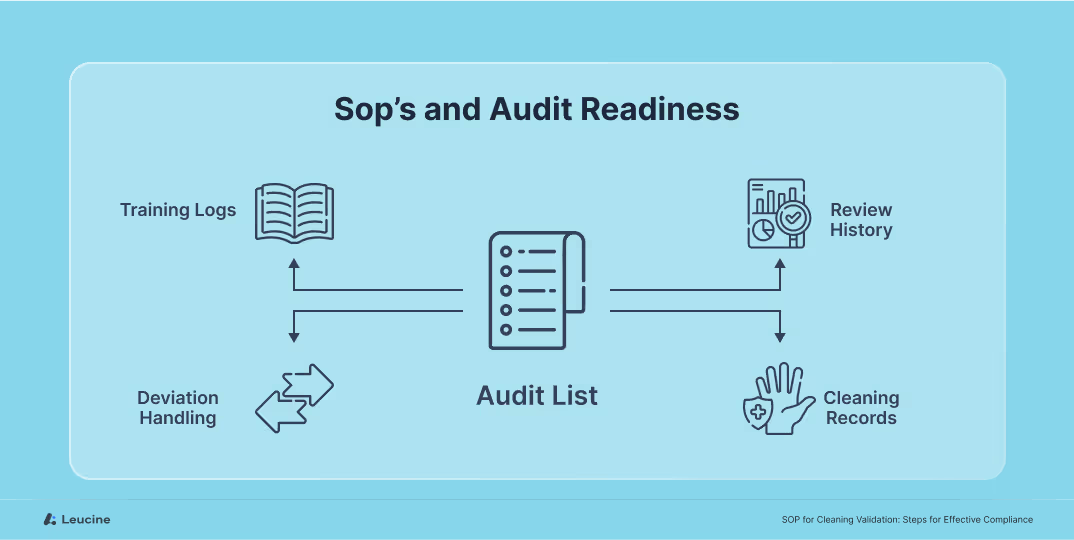
Conclusion
An effective SOP ensures your cleaning process is predictable, auditable, and scientifically sound. It supports your protocol for cleaning validation, aligns cross-functional teams, and upholds the integrity of your products.
Transform your SOP lifecycle—centralize validation and simplify compliance with CLEEN .
Frequently Asked Questions
